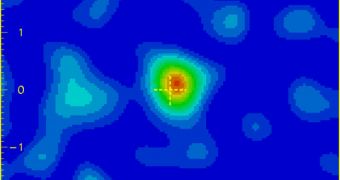Using a series of datasets from several spacecrafts and observatories, experts have determined that the amount of cosmic rays the Earth was subjected to in 2009 was the largest ever recorded.
Experts who conducted the measurements said that in no other period since the beginning of the Space Age have so many radiation of such high intensity penetrated so deep into the inner solar system.
In order to calculate the amount of cosmic rays that reached Mars, Earth and beyond, experts used data primarily collected by the NASA Advanced Composition Explorer (ACE), Wired reports.
Astrophysicists believe that this may be nothing more than an odd occurrence, that may be linked to the period of solar minimum our Sun is in at this point.
As the star is beginning to show signs of activity again, it is very likely that the heliosphere will become sufficiently strong to prevent this many cosmic rays from reaching our planet.
The heliosphere is a protective bubble in which our solar system lies, which prevents particles from the interstellar medium permeating the Milky Way from making its way to the planets.
Virtually all matter contained in this protective layer emanated from the Sun at one point or another. Given the prolonged solar minimum, it stands to reason that the heliosphere may have been affected.
“It’s sort of like everything [is] working in the same direction right now, to allow cosmic rays greater access to the inner solar system,” says study team member Richard Mewaldt.
The expert is a space scientist who holds an appointment at the California Institute of Technology (Caltech), in Pasadena. He is also the author of a study appearing in the October 7 issue of the esteemed Astrophysical Journal Letters.
“Up until now [cosmic ray levels] had been reaching a constant level each solar minimum. But this one was different. This cycle, they’re more intense than they were in the past,” the expert explains.
These elevated levels of radiation can affect spacecraft and people living aboard the International Space Station (ISS). Mission controllers reported a 25 percent rise in the amount of glitches their exploration robots exhibited last year.
“I believe that this paper is the first paper that really shows us how the heliosphere works as a big global system. I think it will become an important paper because of that,” says NASA astronomers William D. Pesnell.

 14 DAY TRIAL //
14 DAY TRIAL //